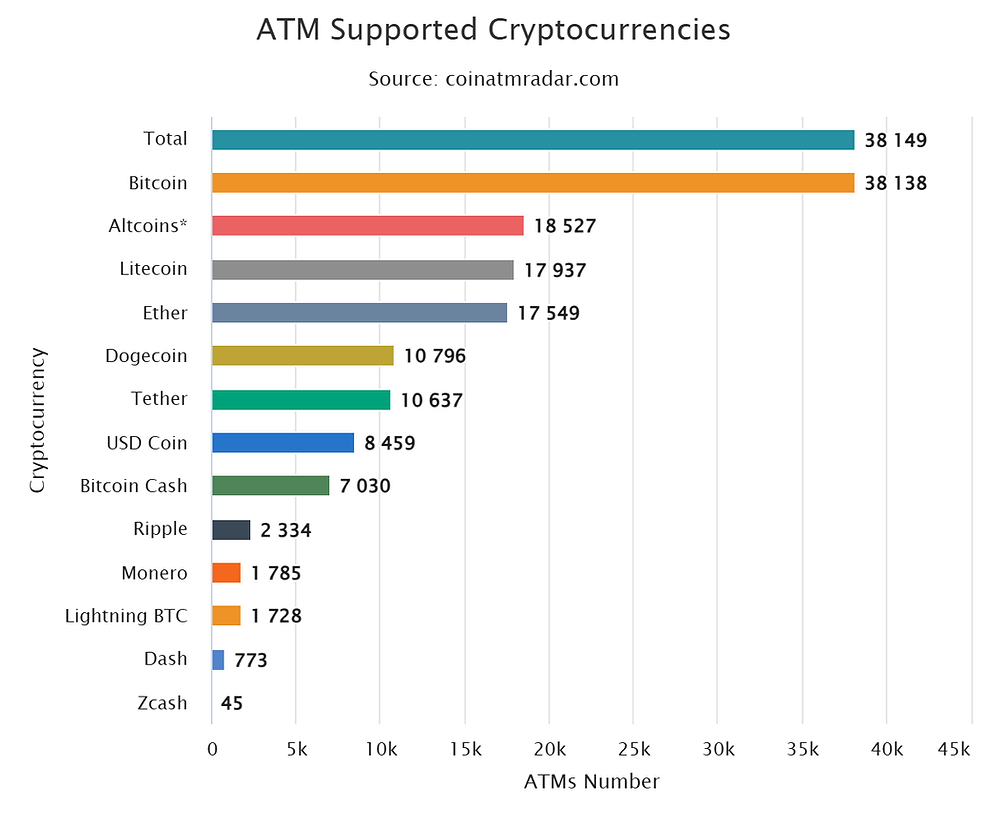Cryptocurrency ATMs are becoming increasingly widespread across the globe, with countries like Poland, Canada, Spain, and Australia expanding their networks to offer easier access to digital currencies. While these machines are popular for their convenience, they have also raised concerns among regulatory bodies due to their potential misuse in illegal activities, particularly money laundering. Despite regulatory efforts to enforce Know Your Customer (KYC) and Anti-Money Laundering (AML) practices, gaps in oversight still allow criminals to exploit cryptocurrency ATMs for illicit financial transactions.

Cryptocurrency ATMs are machines connected to blockchain networks that facilitate the buying and selling of digital assets. Unlike traditional banking systems, they often operate without the oversight of major financial institutions, offering a degree of anonymity for users. With these ATMs, users can deposit cash to purchase cryptocurrencies or withdraw fiat currency by converting their digital assets. This ease of access has contributed to their increasing popularity, but also their vulnerability to misuse.
Money Laundering Risks Involving Crypto ATMs occurs in three stages:
- Placement: Criminals looking to introduce illicit funds into the financial system can use crypto ATMs to exchange cash for digital assets. Many machines have minimal identification requirements, such as scanning a QR code, which makes it easier for criminals to bypass stringent AML procedures.
- Layering: After acquiring cryptocurrencies, criminals can move the digital assets through various wallets, decentralized exchanges, or peer-to-peer transactions, further obscuring the origin of the funds. The ability to transfer funds across borders without intermediaries adds complexity for authorities investigating illicit activities.
- Integration: Once the illicit funds are layered, they can be converted back into fiat currency, often by withdrawing small amounts from multiple ATMs in different locations. This method helps criminals avoid triggering regulatory reporting thresholds, allowing them to launder large sums of money in smaller, less noticeable transactions.

Rising Fraud and Law Enforcement Actions
While there is growing concern about the role of cryptocurrency ATMs in financial crimes, regulations remain inconsistent across different regions. Some machines implement strict measures, such as facial recognition and ID verification, while others have little to no oversight, creating opportunities for criminals to exploit regulatory loopholes. Transaction fees for crypto ATMs can also vary significantly, with global averages showing an 8.4% fee for buying Bitcoin and 5.4% for selling, which makes these machines financially viable for money laundering operations.
Moreover, the anonymity of cryptocurrencies and their ability to be exchanged online, often without clear identification of the parties involved, further complicates efforts to combat money laundering. Criminals can exploit this anonymity to move money across borders with minimal visibility. Techniques such as cross-blockchain “bridges” are often used to obscure transactions even more, making it increasingly difficult for authorities to track illicit activities.
Crypto Automated Teller Machine (ATM) Market – Macro Economic Scenario
As the cryptocurrency ATM market continues to grow, it is also impacted by broader macroeconomic factors, such as inflation could drive people to cryptocurrencies as a safer alternative to fiat currencies, potentially increasing the demand for crypto ATMs.
For example, during times of economic uncertainty, individuals may turn to digital assets like Bitcoin or Ethereum to preserve their wealth, leading to more ATM usage.
However, inflation might also raise operational costs for ATM providers, such as hardware, transaction fees, and maintenance, which could affect profitability. In addition, conflicts like the Ukraine-Russia War may have accelerated the use of cryptocurrencies for bypassing sanctions and facilitating cross-border transactions. Crypto ATMs could see higher demand in regions impacted by the war, as individuals look for alternative financial channels.
However, the war might also lead to tighter scrutiny and regulatory responses, which could present challenges for the market moving forward.

According to data from CoinATMRadar, Bitcoin remains the most widely supported cryptocurrency on ATMs, with a significant majority of machines offering Bitcoin transactions.
Ethereum and Litecoin are also commonly supported, though to a lesser extent compared to Bitcoin. Other cryptocurrencies like Dogecoin, Bitcoin Cash, Dash, and Tether are supported by a smaller proportion of crypto ATMs.

Final Thoughts
Cryptocurrency ATMs serve as a convenient interface between digital and fiat currencies, but strengthening AML regulations, enforcing stricter KYC procedures, and improving transaction monitoring are essential steps in mitigating the risks associated with these machines. Without more robust oversight, cryptocurrency ATMs will continue to be seen as untrustworthy by financial regulators and law enforcement agencies worldwide.
Additional Resources
https://www.cnbc.com/2024/09/08/biggest-risks-of-accessing-crypto-through-bitcoin-atm.html
https://crypto.news/crypto-atms-fraud-and-scams-on-the-rise-in-the-us-report/
https://cryptodnes.bg/en/poland-expands-bitcoin-atm-network-becoming-a-major-crypto-hub/
While we strive for accuracy in our content, we acknowledge that errors may occur. If you find any mistakes, please contact us at contact@nominis.io Your feedback is appreciated!






.png)